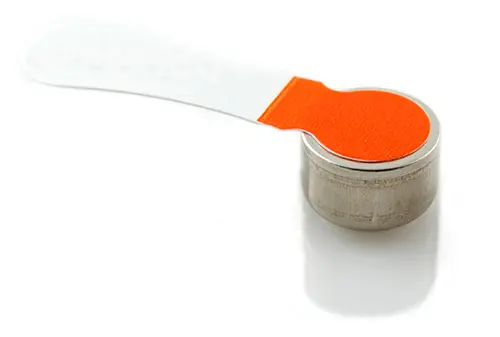Hearing Aid Batteries in Denver and Surrounding Areas
Types of Hearing Aid Batteries
Which battery is right for you?
Hearing technology has come a long way, and there are more battery options than ever. At our clinics in Denver, Arvada, Castle Rock, Greeley, Lakewood, and Louisville, we’ll help you find the battery solution that best fits your hearing loss, your devices, and your lifestyle.
Disposable Zinc-Air Batteries
These are the classic “button batteries” most commonly used in traditional hearing aids. They are activated by air and must be replaced every few days depending on size and usage.
Rechargeable Hearing Aid Batteries
Rechargeable batteries are growing in popularity thanks to their convenience and ease of use. Just place your hearing aids in their charger overnight and enjoy up to 24 hours of listening the next day, with no tiny batteries to fuss with.
Not all hearing aids are compatible with rechargeable batteries. Our team will help you choose the option that works best for your hearing and your hands.
Hearing Aid Battery Sizes and Lifespans
Battery Size – Tab Color – Average Lifespan
There are five standard hearing aid battery sizes, but four are used most often. Each has a unique color tab for easy identification:

Size 10
Yellow –
3 to 7 days

Size 312
Brown –
3 to 10 days

Size 13
Orange –
6 to 14 days

Size 675
Blue –
9 to 20 days
PRO TIP
The more power your hearing aid needs (due to style or severity of hearing loss), the larger the battery size required.
Hearing Aid Battery FAQ
How do Zinc-Air batteries work?
Zinc-air batteries are activated by oxygen, which is why they come sealed with a small sticker. Once the tab is removed, oxygen enters the cell and starts the battery. For best results, wait 5 minutes before inserting the battery into your hearing aid.
⚠️ Once activated, the battery cannot be turned off by reapplying the tab, so only remove the sticker when you’re ready to use the battery.
What are the best practices for battery storage?
To keep your batteries working their best:
- Store at room temperature in a dry place
- Don’t refrigerate, this can create moisture and damage the battery
- Use older batteries first to avoid expiration
Have questions about how to get the most life out of your batteries?
Why are more patients choosing rechargeable hearing aids?
Cost Savings
Traditional hearing aids can use over 100 disposable batteries a year, costing up to $100 annually. Rechargeables eliminate that ongoing cost and hassle.
Convenient Charging
Just like wireless earbuds, today’s rechargeable hearing aids come with charging cases. Charge overnight and enjoy all-day power with no more surprises at dinner or during important conversations.
Easy to Use
Small batteries can be tough for anyone with dexterity or vision issues. Rechargeable options are easier to manage and perfect for patients who want a low-maintenance solution.
Get Expert Battery Advice at Colorado Ear Care
Whether you’re new to hearing aids or just want to switch to a more convenient option, Colorado Ear Care is here to help. We’ll walk you through battery types, sizes, and your hearing aid compatibility.

